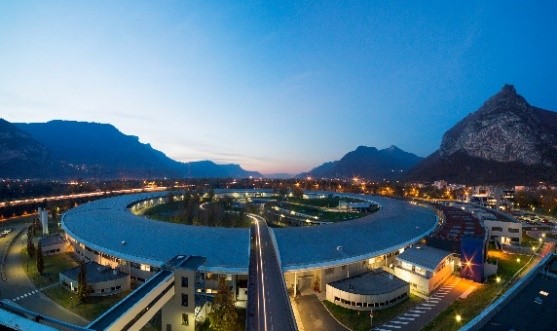
ESRF : Accelerated X-ray Characterization of Materials at the French CRD beamlines of the ESRF
Responsible: Etienne BUSTARRET, Institut Néel/Grenoble
Keywords: Platforms, codes, data, artificial intelligence, workflows
Thanks to the penetration depth of high-energy X-rays from the new ESRF EBS source, the French CRG beamlines offer 150 French laboratories high-resolution multi-scale characterization by diffraction, diffusion or absorption. They develop sample environments for in situ and operando measurements.
The PEPR DIADEM program aims to accelerate the discovery and optimization of functional or structural materials by making experiments faster and improving the efficiency of data processing. Drawing on their experience in the characterization of advanced materials, 4 of the CRG lines propose to carry out the DIADEM/ESRF project: D2AM (BM02) and IF (BM32) using diffraction and X-ray scattering in chemistry, physics, surface treatment and materials, including those of heritage; FAME-UHD (BM16) and FAME-PIX (BM30) for spectroscopy and speciation in biology, chemistry, environmental sciences and geosciences.
Thanks to the renewed performance of the equipment (Equipex+ MAGNIFIX project), counting times will be reduced with the improvement of the beam and detection. The limiting step will then become sample handling. Automating it more completely, such as screening, measurement and data management, would increase the throughput of characterized samples. Opportunities in this direction have been identified on the 4 lines, where robotic sample changers could manage hundreds of samples (SAXS-WAXS and GISAXS-GIWAXS on D2AM, LaueMAX and GMT instruments (XRR, GIXRD) on IF) . In parallel, new operando devices (HPHT reactors or microreactors, (electro)chemical, oven, electric fields) using faster detectors constitute another way of accelerating studies, in particular for characterization by XAS (FAME-UHD and FAME-PIX), or screening of production conditions by SAXS (D2AM).
The acceleration will also result from the implementation of a new generation of energy-resolved 2D detectors, where each pixel records a spectrum: such pixel detectors will be developed for Laue (IF) or XAS spectra on ultra- diluted (sub ppm: FAME-UHD). Thus equipped, these 4 F-CRG beamlines will meet the rapid characterization conditions required to take part in the “open discovery hub” proposed by the DIADEM program. With the arrival of high-resolution 3D imaging and fast 2D detectors, TGIRs around the world are experiencing a “data deluge”, and existing digital tools must be adapted to cope. In this context, Artificial Intelligence (AI) will enable the serial analysis of massive and complex data, and the characterization of materials at the nanometric scale. These tasks require specific digital skills to which line scientists will need to be trained by AI specialists. The processing and analysis processes for large data sets must interact if we want to ensure the interoperability requested by users. These new skills will be shared between the beamlines and within the DIADEM program in order to cross-reference ideas and practices.
Experiment proposals are selected twice a year by the joint scientific committees with SOLEIL, and those of the ESRF. In order to meet DIADEM’s rapid characterization objectives, the current mode of access to the lines, which is biannual, may prove insufficient. A final objective of the DIADEM/ESRF project will be to see if other modes, such as BAG (experiments allocated by block in bio-crystallography), could be adapted to the advanced materials community while respecting scientific quality requirements.
